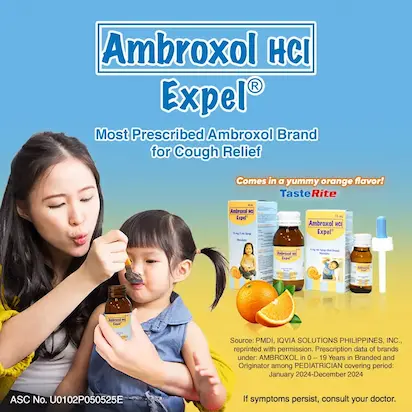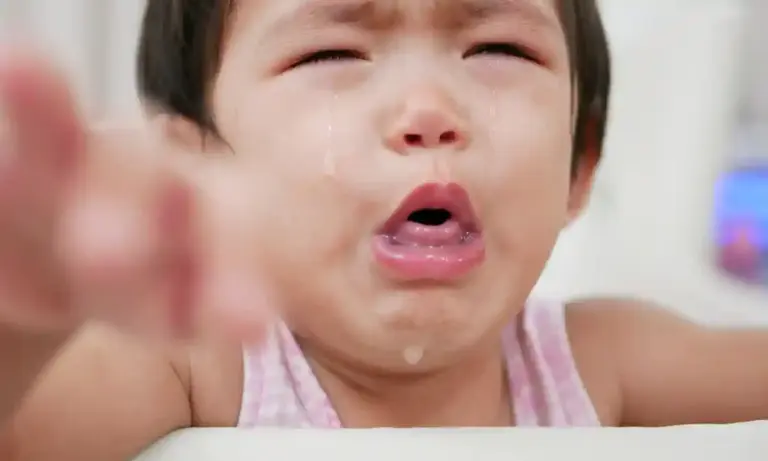Your baby cannot speak yet, but his or her cough says a lot. When it sounds wet and full of phlegm, you instinctively know something is not quite right. You wish your little one could say, “My throat hurts,” or “Help me breathe easier.” Until that day comes, you are their voice and their first line of care.
So, what can you do to help your child? This guide on productive cough can assist you. Additionally, learn how adding Ambroxol HCl (Expel®) Drops to your medicine cabinets is an incredible hack.
- Staying Calm and Collected
It is entirely understandable to feel worried when you hear your baby coughing—especially when it sounds wet or phlegmy. As a parent, your first instinct is to protect and comfort your child. However, one of the most important things you can do at that moment is to stay calm and collected.
Coughing, even with phlegm, is often a natural reflex. It is your baby’s way of clearing out mucus from their airways. While it may sound uncomfortable, this kind of cough can be a good sign. It means the body is doing what it is supposed to do to fight off an illness.
- Causes of Infant Cough and Phlegm
Understanding the cause of your baby’s cough can help you determine the best way to support them. Most coughs are caused by common viruses, such as those that lead to colds or the flu, which typically improve on their own with rest and care. On the other hand, a wet cough with no fever in babies can be triggered by environmental irritants, such as smoke, car exhaust, or strong household odors, which irritate your baby’s sensitive airways.
While most coughs are not severe, it is essential to watch for warning signs. It could be a sign of a more serious condition if your baby’s cough lasts longer than expected or is accompanied by difficulty breathing, a high fever, or unusual behavior. In such cases, do not hesitate to contact your pediatrician to receive the proper care promptly and ensure your little one remains safe and comfortable.
- Hydration Using Breast Milk and Formulas
Hydration is your baby’s best friend when it comes to easing coughs. If your baby is not drinking enough, their mucus can dry out and become more difficult to remove. So, keep nursing or offering formulas as you usually do. There is no need to overdo it; keep giving your babies the usual amounts. Older babies can also enjoy some water to stay comfy and hydrated.
- Saline Drops For Newborns Cough with Phlegm
Does your baby seem to cough more after sleeping or in the morning? It might be from nasal congestion. During a cold, mucus can build up in the nose and drip down the back of the throat, which may lead to coughing. With your pediatrician’s guidance, you can try using saline nasal drops to ease the congestion. A few drops in each nostril, a few times a day, can help loosen mucus and reduce irritation. If your baby sneezes afterward, that is normal. It just means the drops are doing what they are meant to do.
- Gentle Suction of the Nose
After applying saline drops to loosen the mucus, the next step is to gently clear your little one’s nose with the help of a bulb syringe or a nasal aspirator. Be gentle and only suction as needed, typically after using saline drops. Over-suctioning can irritate the delicate lining of your baby’s nose. If your baby resists, try to soothe them with a calm voice or take a short break before attempting again.
- Mucolytics Under the Guidance of Pedia
If your baby has a cough with phlegm, ambroxol, a mucolytic agent (used to help clear mucus during a productive cough), might help. It is generally well-tolerated in children and is available in formulations suitable for different age groups. However, it is important to use ambroxol only under the guidance of your pediatrician. Be mindful of proper dosage, timing, and monitoring. Moreover, it is always advisable to choose reputable brands.
Excellent in Expelling Phlegm
For cough and phlegm of your babies, consider the most pedia-prescribed branded ambroxol, Ambroxol HCl (Expel®) Drops. It is used for the relief of cough secondary to acute and chronic diseases of the respiratory tract accompanied by excessive lung secretions such as chronic bronchitis, asthmatic bronchitis, and bronchial asthma.
It contains ambroxol, which helps break down mucus, resulting in the production of less thick and less sticky mucus or phlegm. Ambroxol also aids in improving mucociliary clearance (mucus flow and transport), making phlegm easier to cough up and expel.
Excellence in Taste
Ambroxol HCl (Expel®) Drops is formulated with TasteRite technology, giving it a kid-friendly, yummy orange flavor that’s easier for babies to take.
Find Ambroxol HCl (Expel®) Drops online or at leading drugstores nationwide.
Suggested Usage
Ambroxol HCl (Expel®) Drops should be taken orally (by mouth), as recommended by the doctor.
Babies 6 months and younger:
- 0.5 mL of the 6 mg/mL oral drops every 12 hours
Babies 7 to 12 months old:
- 1 mL of the 6 mg/mL oral drops every 12 hours
Toddlers 1 to 2 years old:
- 1.25 mL of the 6 mg/mL oral drops or 2.5 mL or half a teaspoon of the 15 mg/5 mL syrup every 12 hours
Children 3 to 6 years old:
- 2.5 mL half a teaspoon of the cough syrup every 8 hours
Kids 7 to 12 years old:
- 5 mL (1 teaspoon) of the cough syrup every 8 to 12 hours
If symptoms persist, consult a doctor.
Source: PMDI, IQVIA SOLUTIONS PHILIPPINES, INC., reprinted with permission. Prescription data of brands under: AMBROXOL in 0 – 19 Years in Branded and Originator among PEDIATRICIANS covering period: January 2024-December 2024
References:
6 Pediatrician-Approved Tips for Dealing with Mucus | UNC Health Talk
Baby & Child Coughing: What Baby’s Cough Could Mean | Texas Children's
How to Help Baby with Cough at Home
My Newborn Is Coughing, Should I Be Worried? | Unilab | Article
Colds, coughs and ear infections in children - NHS
How to Clean and Sterilize Baby Toys Safely?
An overview of efficacy and safety of ambroxol for the treatment of acute and chronic respiratory diseases with a special regard to children - PMC
ASC Ref No. U0247P071125E



